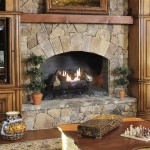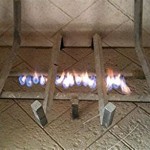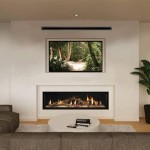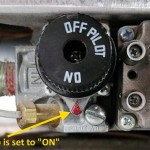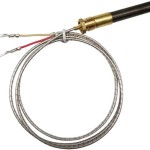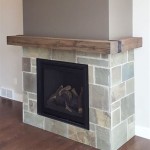Heat Shield Fireplace Repair: Ensuring Safety and Efficiency
Fireplaces offer a comforting and aesthetically pleasing ambiance to homes. However, their operation involves high temperatures and potential fire hazards. A crucial component in mitigating these risks is the heat shield. This article explores the importance of heat shields in fireplaces, common issues that necessitate repair, and the steps involved in ensuring their proper functioning and longevity.
A heat shield is designed to protect combustible materials surrounding a fireplace from excessive heat exposure. It serves as a barrier, reducing the temperature of adjacent walls, mantels, and framing. Without a properly functioning heat shield, the risk of a fire significantly increases, as these surrounding materials could reach their ignition point. Furthermore, excessive heat can cause structural damage to the fireplace itself and the surrounding building elements.
The materials used in heat shields vary depending on the fireplace design and building codes. Common materials include sheet metal, ceramic fiberboard, and specialized thermal insulation. The selection of the appropriate material depends on factors like the expected temperature range, the proximity to combustible materials, and the desired aesthetic integration with the fireplace design.
Understanding the Importance of the Heat Shield
The fundamental purpose of a heat shield is to provide a safe distance and temperature buffer between the fireplace firebox and combustible building components. This separation adheres to safety standards established by organizations like the National Fire Protection Association (NFPA) and is often mandated by local building codes. Ignoring these regulations and allowing excessive heat transfer can result in devastating consequences.
Beyond preventing fires, a properly installed heat shield contributes to the fireplace's overall efficiency. By reflecting heat back into the firebox, it promotes better combustion and reduces heat loss into the surrounding structure. This can translate to more efficient fuel consumption and a more comfortable room temperature during fireplace operation.
The heat shield also protects the structural integrity of the fireplace and chimney system. Prolonged exposure to high temperatures can weaken masonry, cause cracks, and accelerate deterioration. By mitigating these effects, the heat shield extends the lifespan of the entire fireplace system and reduces the need for costly repairs in the future.
Regular inspections of the heat shield are critical to identify potential issues before they escalate into major problems. Homeowners should visually examine the heat shield for signs of damage, such as rust, corrosion, warping, or cracks. Any observed irregularities should be addressed promptly by a qualified professional.
Common Heat Shield Problems and Repair Needs
Several factors can contribute to the deterioration or malfunction of a heat shield. Over time, exposure to high temperatures and corrosive byproducts of combustion can weaken the materials used in its construction. Physical damage, such as impacts or accidental knocks, can also compromise its integrity.
Rust and corrosion are common problems, particularly in older fireplaces or those located in humid environments. These processes weaken the metal components of the heat shield, reducing its ability to effectively reflect heat. Similarly, warping or bending of the heat shield can create gaps that allow heat to escape, negating its protective function.
Cracks in ceramic fiberboard or other insulating materials can also compromise the effectiveness of the heat shield. These cracks allow heat to penetrate directly to the surrounding structure, increasing the risk of fire. Additionally, the breakdown of insulation materials can release harmful particles into the air, posing a health hazard.
Improper installation is another frequent cause of heat shield failure. If the heat shield is not correctly positioned or secured, it may not provide adequate protection. Furthermore, using the wrong type of heat shield for a particular fireplace can also lead to problems.
Repairing a damaged heat shield requires careful assessment and appropriate intervention. In some cases, minor repairs, such as patching cracks or reinforcing weakened areas, may be sufficient. However, in more severe cases, complete replacement of the heat shield may be necessary.
When replacing a heat shield, it is crucial to select a suitable replacement that meets the specific requirements of the fireplace and adheres to local building codes. A qualified professional can assess the fireplace and recommend the appropriate type of heat shield.
Steps in Heat Shield Fireplace Repair
The process of repairing or replacing a heat shield typically involves several steps. First, the area around the fireplace should be carefully inspected to identify the extent of the damage and assess the condition of the surrounding materials. This inspection should include a visual examination of the heat shield, as well as the adjacent walls, mantel, and framing.
Next, the damaged or deteriorated heat shield must be removed. This may involve unscrewing, unbolting, or carefully prying the heat shield from its mounting. It is important to exercise caution during removal to avoid damaging the surrounding structure.
Before installing a new heat shield, the area should be thoroughly cleaned. Any debris, soot, or residue should be removed to ensure proper adhesion and contact between the heat shield and the fireplace structure.
The new heat shield should be carefully positioned and secured according to the manufacturer's instructions and local building codes. It is important to ensure that the heat shield is properly aligned and that all fasteners are securely tightened.
Once the heat shield is installed, it should be inspected to verify that it is providing adequate protection. This can be done by using a thermal imaging camera to measure the temperature of the surrounding surfaces during fireplace operation. If any areas show excessive heat, adjustments may be necessary.
Regular maintenance of the heat shield can help prevent future problems. This includes periodic cleaning to remove soot and debris, as well as visual inspections to identify any signs of damage or deterioration. Promptly addressing any issues can prevent them from escalating into more significant problems.
It is important to note that heat shield repair and replacement can be complex and potentially hazardous tasks. Homeowners who are not experienced in this type of work should consult with a qualified professional to ensure that the job is done safely and correctly. A professional can assess the situation, recommend the appropriate solutions, and perform the work in accordance with all applicable regulations.
The installation of a heat shield often involves modifications around the firebox. All local safety regulations must be followed. If a hearth extension needs to be modified, or any framing work performed, a professional well-versed in local codes must perform the work.
In addition to addressing the heat shield itself, it is also important to inspect the fireplace chimney. Cracks or gaps in the chimney can allow heat and smoke to escape, increasing the risk of fire. Any chimney issues should be addressed promptly to ensure the safe and efficient operation of the fireplace.
The proper functioning of a heat shield is essential for the safe and efficient operation of a fireplace. Regular inspections, timely repairs, and professional maintenance can help ensure that the heat shield is providing adequate protection and that the fireplace is operating safely and efficiently. Ignoring heat shield issues can lead to serious consequences, including fires and structural damage. Therefore, homeowners should prioritize heat shield maintenance and seek professional assistance when needed.

Chimney Lining Repair Systems Heatshield

The Advantages Of Heatshield Relining Southern Md

Heatshield Chimney Restoration Sweeping And Repair Hartford Ct

Chimney Lining Repair Systems Heatshield

Heatshield Chimney Flue Repair System

Certified Heatshield Installer Flue Liner Repair Va

Heatshield Chimney Relining Services Clay Liner Repair

Heat Shield Chimney Flue Heatshield Liner

Heatshield Ground To Crown Chimney Fireplace Services

Heatshield Chimney Flue Liner Smoke Chamber Repair Systems
Related Posts


